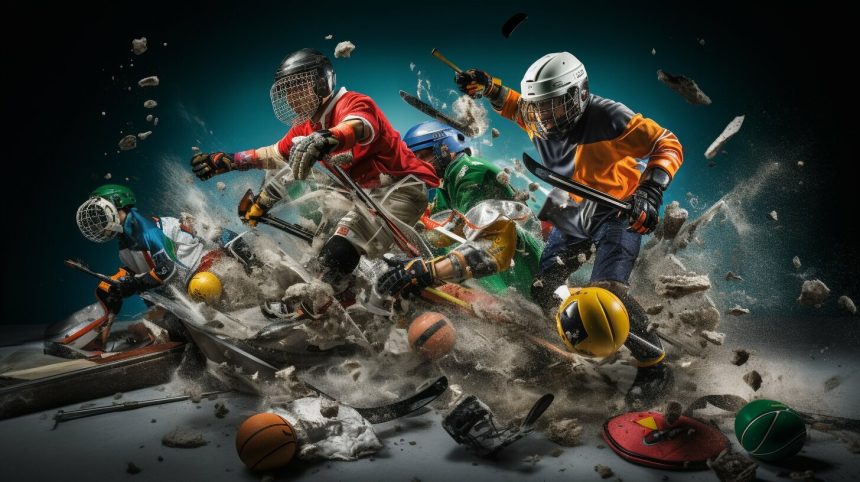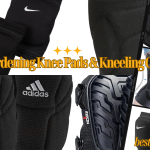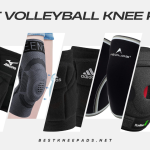Sports play a crucial role in maintaining a healthy lifestyle and providing an avenue for individuals to showcase their talents. However, it is essential to prioritize safety for athletes to enjoy sports without risking their well-being. Safety in sports refers to the guidelines, measures, and protocols established to minimize the inherent risks associated with athletic activities.
The athletic environment must be secure to protect athletes from accidents or injuries. This requires a collaborative effort from athletes, coaches, officials, and sports organizations to ensure that safety is prioritized at all times.
Key Takeaways
- Safety in sports refers to measures established to minimize risks associated with sports activities
- The athletic environment must be secure to protect athletes from accidents or injuries
- Prioritizing safety requires a collaborative effort from all stakeholders involved in sports participation
Understanding the Risks
Participation in sports activities comes with inherent risks that athletes must be aware of to ensure their safety. The level of risk may vary depending on the sport, the athlete’s experience, and the environment.
Physical activities such as contact sports like football or hockey or extreme sports like skydiving or rock climbing can lead to severe injuries. These injuries can include fractures, dislocations, and concussions that can have long-term effects on an athlete’s health.
Even non-contact sports such as running or swimming can pose risks such as muscle strain, sprains, or dehydration. Additionally, factors such as weather conditions, equipment failure, or inadequate training can add to the risks.
It is crucial to understand the potential risks associated with sports participation to take appropriate measures to reduce the likelihood of injuries.
Common Sports Risks
The following table provides an overview of common sports risks:
| Risks | Injuries |
|---|---|
| Impact | Fractures, dislocations, concussion, and traumatic brain injury |
| Overuse | Tendonitis, muscle strains, stress fractures |
| Environmental | Heat exhaustion, hypothermia, dehydration |
| Equipment | Cuts, bruises, broken bones |
Athletes should always be aware of the potential risks associated with their sport and take appropriate precautions to minimize the likelihood of injuries.
Pros:
- Injury Prevention: Reducing the risk of injuries keeps athletes in top form.
- Enhanced Performance: Secure environments foster improved player focus and skill development.
- Fan Confidence: Safety measures build trust, assuring fans of athlete well-being.
Cons:
- Play Restrictions: Overemphasis on safety may limit the spontaneity and intensity of play.
- Costs: Implementing safety measures can be expensive, involving investments in equipment, medical staff, and facilities.
- Balancing Act: Striking the right balance between safety and maintaining the essence of the sport can be challenging.
Neutral Points:
- Rule Evolution: Rules adapt to incorporate safety measures, responding to new challenges and sports science.
- Athlete Education: Promoting safety involves educating athletes about risks and best practices.
- Technology’s Role: Technology advancements contribute to safety improvements and challenges, requiring constant evaluations.
Critical Guidelines for Sports Safety
To reduce the risks of sports-related injuries, there are several guidelines and rules that athletes, coaches, and sports organizations should follow. These guidelines have been established based on extensive research and experience and should be strictly adhered to to ensure athletes’ safety. Below are some of the critical sports safety guidelines:
- Get a pre-participation physical examination: Before participating in any sports activity, athletes should receive a physical examination from a licensed medical professional. This ensures that the athlete is healthy enough to participate and identifies any pre-existing medical conditions that could increase the risk of injury.
- Use appropriate equipment: Using proper equipment is essential for athletes’ safety. For instance, helmets, mouthguards, shin guards, and pads should be worn appropriately and fit well. The equipment should be well-maintained, and any damage should be reported and repaired or replaced immediately.
- Follow proper techniques: Athletes should be trained on proper techniques for their specific sport. For example, in football, players should learn how to tackle and block properly to avoid head and neck injuries. In basketball, players should learn how to jump and land correctly to prevent knee and ankle injuries.
- Stay hydrated: Dehydration can lead to a variety of health problems, including heat exhaustion and heatstroke. Athletes should drink plenty of fluids before, during, and after the game to stay hydrated.
- Warm-up and cool-down: Athletes should warm up before any sports activity to prepare their muscles for the rigorous activity. After the game, a cool-down is essential to facilitate muscle recovery and reduce the chances of injury.
- Follow proper concussion protocols: Concussions are prevalent in sports and should be taken seriously. Athletes should be educated on the signs and symptoms of a concussion and should be removed from play immediately if a concussion is suspected.
Following these guidelines is essential to reduce the risk of sports-related injuries. Coaches and sports organizations should ensure that these guidelines are strictly adhered to and should incorporate them into their overall safety program. By prioritizing sports safety guidelines, athletes can enjoy their sport and minimize the likelihood of injury.
Proactive Measures for Athletes’ Safety
Athletes and sports organizations can take proactive measures to enhance safety and reduce the likelihood of sports-related accidents. Here are some effective strategies:
- Proper equipment usage: Wearing the appropriate safety gear is crucial in reducing the risk of injury. Athletes should use fitting helmets, mouthguards, and padded gear that adhere to safety standards.
- Conditioning and training techniques: Athletes should maintain proper conditioning and use appropriate training techniques to reduce the risk of injuries. They should follow gradual training regimens that build strength and flexibility while minimizing the risk of overuse injuries.
- Injury prevention programs: Athletes and coaches should implement injury prevention programs that focus on strengthening muscles, improving body mechanics, and reducing the risk of injury.
- Hydration: Athletes should stay hydrated before, during, and after physical activity to avoid dehydration and related complications such as heat exhaustion and cramps.
- Rest and recovery: Proper rest and recovery are essential for athletes to prevent overuse injuries and improve performance.
By taking these proactive measures, athletes can reduce the risk of injuries and play sports safely. It is crucial for athletes, coaches, and sports organizations to prioritize athlete safety, and a proactive approach is key in achieving this goal.
Ensuring a Safe Athletic Environment
- Pre-game Warm-ups:
- Engage in dynamic stretches to enhance flexibility.
- Gradually increase intensity to prepare muscles for activity.
- Hydration:
- Stay adequately hydrated before, during, and after the game.
- Replace electrolytes lost through sweating.
- Skill Training:
- Regularly practice and refine sports-specific skills.
- Enhance technique to reduce the risk of injuries.
- Conditioning Programs:
- Follow a tailored fitness regimen to build strength and endurance.
- Include cross-training to target various muscle groups.
- Emergency Action Plan:
- Establish and communicate a clear plan for emergencies.
- Ensure access to necessary medical assistance.
- Sportsmanship:
- Foster a culture of respect and fair play.
- Discourage aggressive behavior to minimize injuries.
By incorporating these proactive measures, athletes can significantly reduce the likelihood of injuries, ensuring a safer and more enjoyable sports experience.
Conclusion
Safety in sports is crucial for athletes to enjoy their sport while minimizing the risk of injury. Understanding the inherent risks associated with sports participation and following guidelines can help ensure the well-being of athletes.
However, taking proactive measures, such as using proper equipment and injury prevention programs, can reduce the likelihood of sports-related accidents even further. Creating a safe athletic environment also requires the involvement of coaches, officials, and effective communication and supervision.
Ultimately, prioritizing safety not only protects individuals but also contributes to the overall well-being and longevity of sports. Let’s work together to make sports a safe and enjoyable activity for everyone involved.










